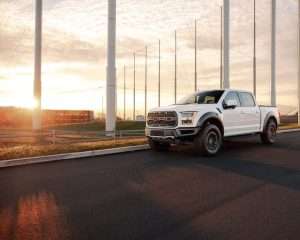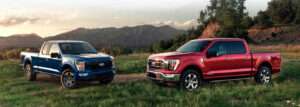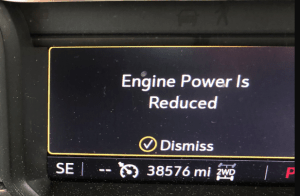Are dodge challengers good in snow? A Comprehensive Guide to the Dodge Challenger’s Winter Performance
With its aggressive styling, impressive engine options, and high-performance capabilities, the Challenger has become a staple in the American automotive industry. However, many drivers wonder if this muscle car is capable of handling winter weather conditions, particularly snow.
The purpose of this article is to examine the Dodge Challenger’s suitability for driving in snow. In this article, we will discuss the main criteria for driving in snow, including traction and handling, ground clearance, and power and acceleration.
We will also examine other factors that affect the Dodge Challenger’s winter performance, such as winter maintenance requirements, winter driving features, and driving comfort and convenience.
By the end of this article, readers should have a comprehensive understanding of the Dodge Challenger’s suitability for winter driving and be able to make an informed decision.
Main Criteria for Driving in Snow
Traction and handling:
The Challenger’s tire options and their performance on snow and ice: Depending on the model and trim level, the Dodge Challenger can come equipped with either performance summer tires, performance all-season tires, or winter tires.
The performance of these tires on snow and ice can greatly affect the car’s overall handling and traction in winter weather conditions.
The importance of winter tires:
Winter tires are designed to provide better traction and handling in snow, ice, and other winter weather conditions compared to all-season or summer tires. Drivers who plan to drive their Dodge Challenger in snow should consider investing in a set of winter tires to improve their safety and winter driving performance.
The car’s weight distribution and its effect on handling in snow:
The Dodge Challenger is a rear-wheel drive car, which can affect its handling in snow. The weight distribution can cause the car to have more oversteer, making it harder to handle in slippery conditions.
The Challenger’s available all-wheel drive system:
For improved traction and handling in snow, some Challenger models offer an all-wheel drive system. This system can improve the car’s overall grip and stability in winter weather conditions, making it easier to drive in snow.
Ground clearance:
The height of the Challenger and its effect on driving in deep snow: The Dodge Challenger is a low-slung car with a ground clearance of around 4-5 inches. This can affect the car’s ability to drive in deep snow, as the low ground clearance can make it difficult to get through deep drifts and piles of snow.
The availability of performance suspension packages and their effect on ground clearance:
Some Challenger models offer performance suspension packages that can lower the car’s ground clearance even further. This can make it even more challenging to drive in deep snow, and drivers should take this into consideration when choosing the right suspension package for their needs.
Power and acceleration:
The Dodge Challenger offers a range of engine options, including V6 and V8 engines, with power outputs ranging from 305 to 797 horsepower. The car’s available power can affect its ability to get through deep snow and tackle steep inclines.
The effect of cold weather on engine performance:
Cold weather can affect the performance of internal combustion engines, making them less efficient and less powerful. Drivers should keep this in mind when driving their Dodge Challenger in the snow and should take steps to maintain their engine’s performance in cold weather.
The car’s acceleration and its ability to get through deep snow:
The Dodge Challenger’s acceleration can be affected by the car’s available power and the conditions of the road. In snow, acceleration can be reduced as the tires struggle for grip, making it harder for the car to get through deep snow. Drivers should take this into consideration when driving in winter weather conditions and be mindful of the car’s acceleration and speed in snowy conditions.
Other Factors to Consider
The Challenger’s winter maintenance requirements
such as the need to winterize the engine and transmission, the importance of replacing the oil and using winter-grade oil, and the need to regularly check the battery and charging system.
The Challenger’s winter driving features,
such as heated seats and steering wheel, the availability of remote start, and the quality of the car’s defrosting and defogging systems.
The Challenger’s driving comfort and convenience in winter
such as the quality of the car’s interior heating, the availability of heated and ventilated seats, and the quality of the car’s infotainment system.
Maintenance
The Challenger’s winter maintenance requirements are an important factor to consider when evaluating its suitability for driving in snow. Proper winterization of the engine and transmission can help ensure reliable performance in cold weather.
Replacement
Replacing the oil with winter-grade oil can also help improve engine performance. Regular checks of the battery and charging system can prevent unexpected breakdowns in cold weather.
Features
The Challenger also has several winter driving features that can enhance the driving experience in snowy conditions. Heated seats and the steering wheel can provide comfort on cold days, while remote start can allow you to warm up the car before getting in.
The car’s defrosting and defogging systems play a critical role in ensuring clear visibility in snowy weather, so it’s important to evaluate their quality.
In addition to the mechanical features, the Challenger’s driving comfort and convenience are also important considerations in winter. A high-quality interior heating system can help keep passengers warm and cozy, while heated and ventilated seats can provide even more comfort.
Infotainment system
The quality of the car’s infotainment system is also important, as it can provide entertainment and navigation assistance during long winter drives. In summary, the Challenger’s winter maintenance requirements, winter driving features, and driving comfort and convenience are all important factors to consider when evaluating its suitability for driving in snow.
Conclusion
In conclusion, the Dodge Challenger is a powerful and popular muscle car that offers a lot of performance and features. However, when it comes to driving in snow, there are several factors that need to be considered.
The Challenger’s tire options, weight distribution, and all-wheel drive system can affect its traction and handling in snow. Its ground clearance and engine performance can also impact its ability to get through deep snow.
Additionally, the Challenger requires proper winter maintenance and has various winter driving features and comfort amenities that should be evaluated.
Overall, the Challenger can be a good choice for winter driving, but it ultimately depends on individual driving needs and preferences.
It is recommended to conduct further research, consult a Dodge dealer or professional mechanic, and test drive the car in snowy conditions to make an informed decision. Remember, safety should always be the top priority when driving in winter weather.
FAQs about Are dodge challengers good in snow.
How does the Dodge Challenger handle the snow?
The handling of the Dodge Challenger in the snow depends on several factors such as tire options, weight distribution, and all-wheel drive system. The car’s tire options, such as winter tires, can greatly improve its traction and handling on snow and ice.
However, its weight distribution can affect its stability and handling in snow, so it’s important to consider this factor. The Challenger’s available all-wheel drive system can also improve its handling in winter conditions.
Is the Dodge Challenger good for winter driving?
Whether the Dodge Challenger is good for winter driving also depends on several factors such as tire options, ground clearance, power and acceleration, winter maintenance, winter driving features, and driving comfort.
While the Challenger has strengths such as its power and acceleration, it also has some weaknesses such as its ground clearance, which can affect its ability to drive in deep snow.
What makes the Dodge Challenger a good car for driving in snow?
What makes the Dodge Challenger a good car for driving in snow is its available tire options, such as winter tires, and its available all-wheel drive system.
These factors can improve its traction and handling in snow and ice. Its powerful engine options can also help it get through deep snow.
Does the Dodge Challenger have good traction in the snow?
The traction of the Dodge Challenger in snow can be improved with winter tires, but the car’s weight distribution and all-wheel drive system can also affect its traction in winter conditions.
Does the Dodge Challenger have good traction in the snow?
Yes, the Dodge Challenger can be driven in the snow, but its handling and performance in these conditions depend on several factors such as tire options, weight distribution, and all-wheel drive system.
Can the Dodge Challenger be driven in the snow?
The Dodge Challenger’s weight distribution can affect its stability and handling in the snow, so it’s important to consider this factor when evaluating its performance in winter conditions.
Is the Dodge Challenger equipped for winter driving?
The Dodge Challenger is equipped with various winter driving features such as heated seats and steering wheel, remote start, and defrosting and defogging systems. However, proper winter maintenance such as winterizing the engine and transmission and using winter-grade oil is also important for winter driving.
What are the best tires for a Dodge Challenger in the snow?
The best tires for a Dodge Challenger in the snow are winter tires, which are designed to provide improved traction and handling on snow and ice.



